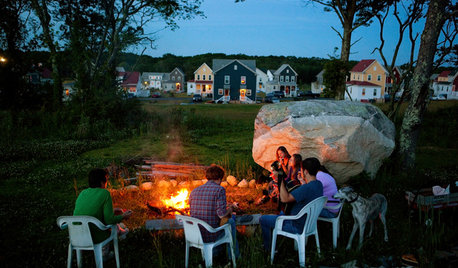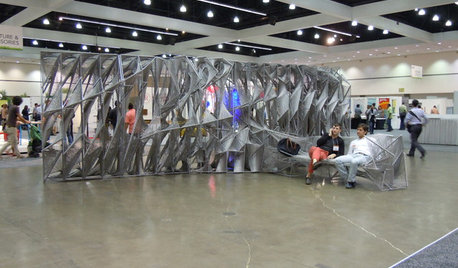Hello Market Gardeners,
After 9 years of applying General Systems Theory to our market gardening operation, We're going public with "Whole Systems Agriculture", described in an article in our local Madera, California newspaper, coppied below.
We grow on wide raised beds under permanent organic mulch--a kind of adaptation of Ruth Stout's "no work" method. A local maintenance gardener brings us grass clippings 4 a week--nearly a cubic yard each time. This makes an excellent mulch, quite effective at supresing weeds.
I hope you enjoy the article. If you go to www.maderatribune.com and put "John Warner" in the search box at the upper lift of the screen, you will find an easier to read version with photographs and captions.
Good wishes,
John
An innovative, family approach to growing and selling
Wednesday, August 11, 2004
By Ramona Frances - Columnist - The Madera Tribune
Formerly called Flowergarden of Madera, the 2-acre farm is located in the Bonadelle Ranchos just west of Highway 41 between Avenues 14 and 15 in Madera County.
The Warners have been growing vegetables and flowers in Madera since 1996. They see their work as an exercise in innovation and creativity.
Striking features of the garden include the 20 raised beds that are 150 feet long, with sloping shoulders and alleys between the beds wide enough to accommodate their riding lawn mower and electric utility vehicle.
They practice a no-tillage, permanent-mulch system inspired by Ruth Stout, a popular garden writer of the 1960s and 70s best known for her book, "Gardening without Work." Other influences include Masanobu Fukuoka and Emilia Hazelips "Synergistic Agriculture."
While Stout purchased her mulch in bales, the Warners grow a portion of theirs in the alleys during the cool of the year when water requirements are minimal compared to the hot days of the summer.
When 68-year-old John Warner was asked why he doesnÂt till the soil he said, "As soon as you open the soil and let air in, carbon and humus is burned up."
Humus, a desirable by-product of compost, is organic matter in a highly decayed state, rich in plant nutrient ions, and when added to soil, increases the soilÂs ability to hold water. The senior Warner regards tillage as an undesirable practice because it destroys soil structure and organic matter and contributes to topsoil erosion.
A retired Agriculture teacher who taught in Orange County in the 1960s, Warner has been influenced by the work of John Jeavons and his spin-off organization, Ecology Action. Jeavons is credited with having introduced French Intensive Gardening to the U.S., a model of growing vegetables that encourages the use of organic materials and using less space to grow more.
Jeavons made intensive-bed planting famous when he published his book "How to Grow More Vegetables."
Warner encourages permanent mulching. Mulching is the process of using organic or inorganic material to cover soil. Layers of material are used to cover soil and block the sunlight. Depending to some degree on the materials used, it is an effective method of preventing germination and growth of annual weeds. Since most seeds require sunlight to germinate, mulch is significant as a weed control method.
"You wouldnÂt want your mother to go without clothes and the earth is your mother," Warner said with a grin.
The minerals and organic matter gradually released from decaying mulch feeds deficient soils, replacing nutrients taken up by roots as plants grow. If the mulch used is not broken down sufficiently - such as green hay - fertilizers may be added to provide nutrients that were consumed as organic materials decompose.
When its time to plant - that is most mornings of the week - Warner and his 16 year old son Ray are out planting a fresh, 25-foot section of bed. They work sequentially through the garden. In the course of a year, the whole garden is planted twice. They start most of their plants in flats per individual cell and set them out a foot apart within the bed.
Holes are drilled through a fresh layer of grass clippings with a cordless drill fitted with an auger.
The young plants are dropped into the holes, squeezed in by hand and watered with a fan spray. New plantings need hand watering for a week, said Warner, until their roots get out into the surrounding soil where drip irrigation is incorporated.
The beds are then dried out, cleaned out, remulched and replanted with very little soil disturbance.
A well thought out system or plan is followed. The time and amount of energy spent on each task is calculated and used to influence the choices they make regarding the type of gardening or small farming they do. The amount of walking Warner does, for example, is a consideration since efficiency is highly valued and decisions are influenced based on it.
"I did a motion study. I discovered that the thing I do most of is walk." said Warner.
During a home tour, Warner demonstrated by counting the number of steps it took him to move seedlings at one station, to a second and third station and so forth, including from the greenhouse to the soil. A golf cart is used to transport people and plants to cover an even larger area as efficiently as possible.
Make all garden tasks repetitive, cyclic, mimic the flow of days and nights, season to season," says Warner.
When Warner was asked how whole-systems agriculture differs from conventional, organic and other forms of alternative agriculture, he indicated that the most obvious way is in its use of conventional science, technology, tractors, sprayers, fertilizers. It also included the way agriculture is viewed as a whole.
"I first described Whole Systems Agriculture on the ÂWhole Earth Magazine website in the year 2000 or so," he said. "It is based on General Systems Theory as it was presented to the scientific community in the 1940s by Bertalanffy and popularized, by physicist-philosopher Fritjof Capra in his book, "The Turning Point." Dr. Capra is also author of "The Tao of Physics", a biography of Dr. Bertalanffy, and a work on systems ecology, "The Web of Life".
"Dr. Capra introduced me to systems thinking through his books," Warner told the board of directors of the Vineyard Farmers Market, one of the locations where his children sell plants and uncommon produce to the public.
In Whole Systems Agriculture, the model for a garden or farm is a complex living organism, compared to a human being or a human social community. The assembly line factory, as an example, serves as a model for more traditional scientific agriculture. It would follow then, that the Whole Systems garden or farm might enjoy advantages similar to the advantages human beings enjoy over machines.
"These advantages include the ability to self-organize and grow rather than just be constructed and then wear down as an automobile does. It includes the advantages of being able to respond quickly to changes in supply and the availability of inputs, such as those derived from petroleum, and changes in price and demand of farm products." he wrote.
A masterÂs level program called Whole Systems has been developed through Antioch University in Washington State and is already being applied in backyard operations.
It might be said that a small and relatively unknown operation can be born from big ideas, and big ideas can be born out of small operations.
--------------------------------------------------------------------------------
Ramona Frances is a columnist for the Madera Tribune. She writes a column called Master Gardener.
















Jeanne_in_Idaho
Related Professionals
Foothill Ranch Landscape Architects & Landscape Designers · Saint Matthews Landscape Architects & Landscape Designers · Paradise Landscape Architects & Landscape Designers · Finneytown Landscape Architects & Landscape Designers · Barrington Landscape Contractors · Chelmsford Landscape Contractors · Golden Landscape Contractors · Northbridge Landscape Contractors · San Benito Landscape Contractors · Spring Landscape Contractors · Tavares Landscape Contractors · East Brunswick Solar Energy Systems · Greenwich Solar Energy Systems · Hercules Solar Energy Systems · Waltham Solar Energy Systems